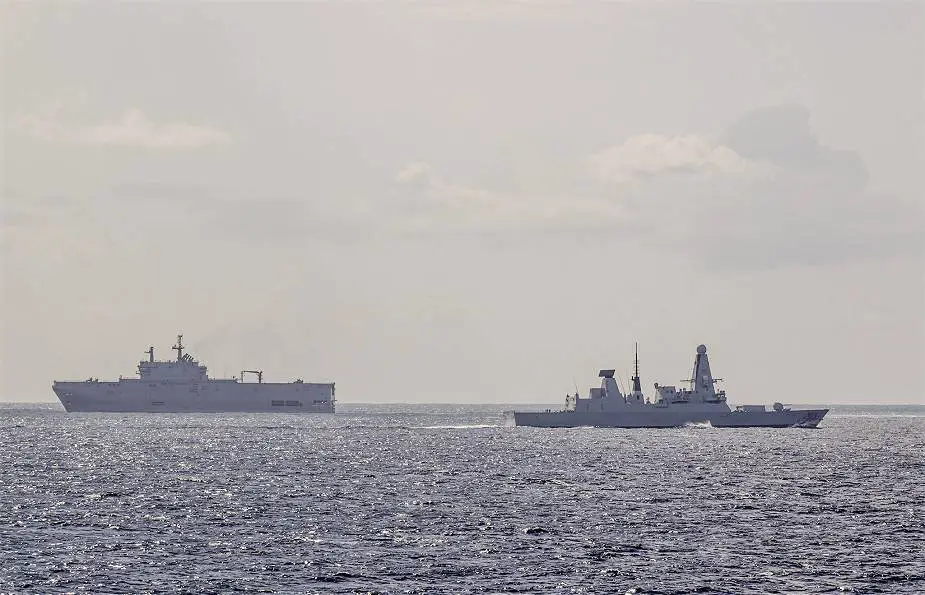Breaking news
British and Egyptian navies conduct combined naval exercises near Egyptian coastline.
According to information published by the British Royal Navy on November 11, 2020, British and Egyptian navies have conducted naval combined exercises that were concluded with a combined amphibious landing operation.
Follow Navy Recognition on Google News at this link
 British navy HMS Dragon Type 45 destroyer sails near Egyptian Navy assault ship ENS Sadat. (Picture source British Navy)
British navy HMS Dragon Type 45 destroyer sails near Egyptian Navy assault ship ENS Sadat. (Picture source British Navy)
British Navy UK flagship HMS Albion amphibious transport dock and destroyer HMS Dragon joined the Egyptian Navy and Air Force for combined exercises on and off the sands of the North African shore, the culmination of a high-profile visit to the land of the pharaohs. Beach assaults, fast jet attacks and speedboats weaving between frigate and destroyers marked a major demonstration of Anglo-Egyptian naval forces in Alexandria.
HMS Albion and Dragon were joined by the El Sadat, plus frigates ENS Sharm el Sheik and Ali Gad, while two Egyptian F16 Fighting Falcon jets simulated an attack on the combined Anglo-Egyptian task group.
The HMS Albion is an Albion-class amphibious transport dock in service with the British Royal Navy, the first of the two-ship Albion class. Built by BAE Systems Marine in Barrow-in-Furness, Albion was launched in March 2001 by the Princess Royal. The Albion-class LPD hads a length of 176 meters (577 ft), a breadth of 28.9 meters (95 ft), and a draught of 7.1 meters (23 ft). She has a normal displacement of 14,000 tonnes (14,000 long tons; 15,000 short tons), 19,560 tonnes (19,250 long tons; 21,560 short tons) at full load and 21,000 tonnes (21,000 long tons; 23,000 short tons) when the dock is flooded. The ship has a crew of 325 and can accommodate up to 405 troops, including their vehicles and combat supplies, in overload conditions
The HMS Dragon is the fourth ship of Type 45 or Daring-class air-defence destroyers built for the Royal Navy. She was launched in November 2008 and commissioned on 20 April 2012. The Type 45 destroyer is 152.4 m (500 ft 0 in) in length, with a beam of 21.2 m (69 ft 7 in), a draught of 7.4 m (24 ft 3 in) and a displacement of approximately 8,500 tonnes (8,400 long tons).
The Type 45 destroyers are primarily designed for anti-air warfare with the capability to defend against targets such as fighter aircraft and drones as well as highly maneuverable sea skimming anti-ship missiles travelling at supersonic speeds
Surface attacks were also practiced to ensure that the task group could operate together and its ships protect each other.
The training concluded with a combined amphibious landing as Royal Marines landing craft from Albion formed assault waves alongside craft from the Sadat to land vehicles and troops across the Egyptian coastline.
The Littoral Response Group (Experimentation) deployment he’s commanded since early September is a mix of training and supporting allies and partners in the Mediterranean region (such as Ukraine, Georgia, Tunisia and Egypt) and testing the kit and tactics which will shape the Future Navy and Future Commando Force.
Upon leaving Egypt, the task group will come under NATO command as it takes part in Operation Sea Guardian, which is committed to maritime security across the Mediterranean.


























